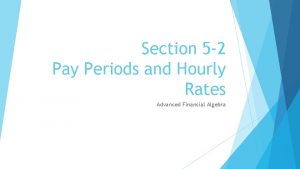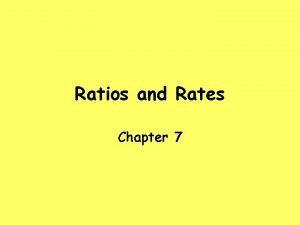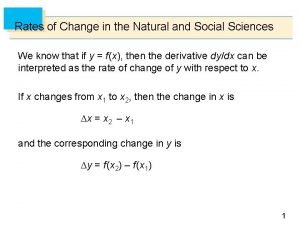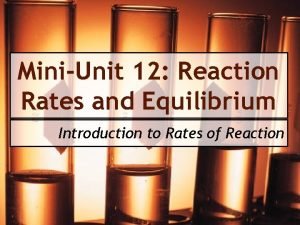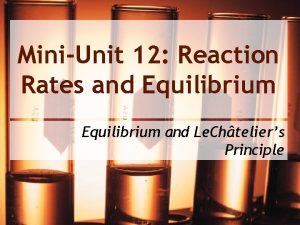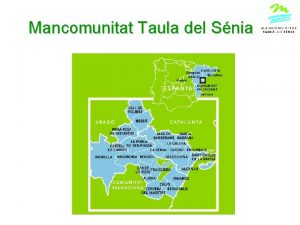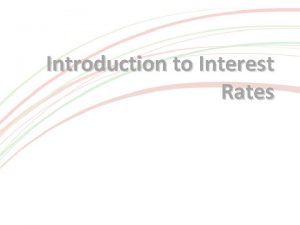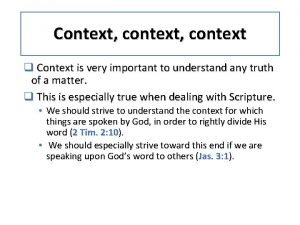SNIa Rates and Progenitors Context SNIa are used



















- Slides: 19

SNIa Rates and Progenitors

Context ² SNIa are used as distance indicators (cosmological parameters) ² SNIa impact on the chemical evolution of stellar systems (Fe production) ² SNIa provide energy to the insterstellar medium (galactic winds) ² SNIa help constraining the evolution of close binaries (GW emission)

SNIa progenitor models (1984) Two main cathegories of SNIa progenitors: Ø Single Degenerate Systems a CO WD accretes from a living companion Ø Double Degenerate Systems the companion is another WD Explosion may occur when v The WD Mass reaches the Chandrasekhar limit Chandra exploders v A Helium layer of ≈0. 1 MO, accumulated on top of the WD, detonates Sub-Chandra exploders A WIDE RANGE OF DELAY TIMES SD DD

The Distribution of the Time Delays (i. e. SNIa rate following an instantaneous burst of SF) Different channels for SNIa production correspond to different proportions of early/late epoch explosions (past a burst of SF), i. e. different DTDs The DTD describes the rate at which energy and metals from SNIa are injected into the ISM following an instantaneous burst of SF it is a fundamental ingredient to model the evolution of stellar systems The SNIa rate in stellar systems is strictly related to the DTD: n. of events/ mass of the SP SFR DTD, τ is the delay time

The SNIa rate in galaxies is proportional to the average DTD weighted by the age distribution of their stellar population RATE (SNu. M) Log DTD <DTD> Younger galaxies have higher rates per unit mass than older galaxies YOUNG Log DELAY TIME BLUE HIGH s. SFR LATE TYPE OLD AVERAGE RED LOW s. SFR EARLY TYPE

Analytic DTDs (Greggio 2005): stellar evolution clock and mass range of progenitors DD CLOSE: CE shrinks more the more massive systems DD WIDE: MDD and A decoupled M 1 > 2 Mo DOUBLE DEGENERATES Mtot> MCh width of the peak controlled by M 2 min late epoch decline controlled by distribution of DDs separation at birth

The SUDARE Survey (Cappellaro, Botticella…) The Supernova Diversity And Rate Evolution is a survey of SN events conducted at the VST (PI : E. Cappellaro) started in 2011 and lasted 4 years. Target: measure the SNIa rate in 0. 2 < z < 0. 8 in a well characterized galaxy sample 4 pointings on the Chandra Deep Field South cover ~ 4 square degrees 1 pointing on the COSMOS field cover 1 square degree Completed analysis of 2 CDFS and the COSMOS field (wealth of ancillary data; VOICE for CDFS)

SUDARE 1 Cappellaro+ 2015 Rate as a function of redshift

SUDARE 1 Cappellaro+ 2015 Rate as a function of redshift RESULTS: DTD not constrained k. Ia = 0. 8 10 -3 (1/Mo) (Sal IMF)

SUDARE 1 Cappellaro+ 2015 Rate of CC SNe RESULTS: k. CC = 0. 7 10 -2 (1/Mo) i. e. consistent with Mass of progenitors from 8 to 40 Mo

SUDARE 2 Botticella+ (2017) Rate as function of galaxy properties Galaxy Sample about 130000 galaxies with multiband photometry (UV to IR) photometric redshift (up to z ~ 1) SFHs from SED fitting techniques Rates of SNe of all types

SUDARE 2 Botticella+ (2017) Rate as function of galaxy properties Select some DTDs Determine how many SNIa’s are expected in the sample by computing for each galaxy CT is the control time ψ is the SFR and summing over the sample galaxies. Comparing the result to the observed counts one determines k. Ia for the different DTDs. /10 -3 k. Ia ≅ 1. 3 events per 1000 Mo of the parent population, almost insensitive to DTD and SFR.

SUDARE 2 Rate as function of U-J color of parent galaxy Models for different DTDs and SFHs: k. Ia = ( No definite preference of one DTD model over the others 1. 2 1. 5) x 10 -3 AGE Botticella, Cappellaro, Greggio +, 2017

SUDARE 3: Greggio, Cappellaro 2019 Analysis of the systematics in this modelling 3 ingredients enter the game: v SSP MODELS v SFH v DTD + OBSERVED RATES Abramson +, log-normal SFHs

SUDARE 3: Greggio, Cappellaro 2019 Analysis of the systematics in this modelling Exp dec. All SFHs are generally compatible with observed colors Delayed exp Models with s. SFR>10 -11 Mo/yr fall on the blue cloud Our modelling of galaxy colours is consistent with the data Log-normal Peng + models

Which Mass-to-Light ratio? M/L from Bell & De. Jong 2001 M/L from integral of SFH

SUDARE 3: Greggio, Cappellaro 2019 Analysis of the systematics in this modelling Log-Normal SFHs + four DTD models The different rates measured at the color extremes hamper the constraint on the DTD We need better statistics on a homogeneous data base to derive a conclusion

SUDARE 3: Greggio, Cappellaro 2019 Analysis of the systematics in this modelling The similarity of the rates at intermediate colors provide a robust measument of k. Ia. Averaging on the two colors, and three surveys the value of k. Ia turns out very close to that derived from the cosmic SNIa rate

SUDARE 3: Greggio, Cappellaro 2019 Analysis of the systematics in this modelling Will LSST provide the answer about the shape of the DTD? YES: statistics will be more than enough BUT: we will need to characterize in detail the SFH in the sample galaxies
 Antigentest åre
Antigentest åre Fuente
Fuente A rate is a ratio
A rate is a ratio Ratios rates and unit rates guided notes
Ratios rates and unit rates guided notes Ratios rates and unit rates
Ratios rates and unit rates Ratios rates and unit rates
Ratios rates and unit rates Example of presupposition
Example of presupposition Nonagist
Nonagist High context vs low context culture ppt
High context vs low context culture ppt Contoh komunikasi high context dan low context
Contoh komunikasi high context dan low context Interest rates and economic growth
Interest rates and economic growth 6-2 pay periods and hourly rates
6-2 pay periods and hourly rates Ratio and rates
Ratio and rates Ratios, rates, and proportions
Ratios, rates, and proportions Rates of change in the natural and social sciences
Rates of change in the natural and social sciences Simple mask flow rate
Simple mask flow rate Venturi mask types
Venturi mask types Mini unit reaction rates and equilibrium
Mini unit reaction rates and equilibrium Mini unit reaction rates and equilibrium
Mini unit reaction rates and equilibrium 1-4 extrema and average rates of change
1-4 extrema and average rates of change











